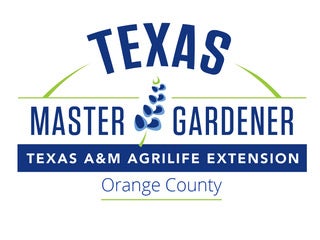What is a Hugelkultur Garden?
Published 4:26 am Saturday, February 22, 2020
|
Getting your Trinity Audio player ready...
|
By Sheri Bethard
Certified Texas Master Gardener, Orange County Master Gardeners
Several weeks ago, five OCMG’ers attended a seminar at Arbor Gate Nursery in Tomball to learn more about spring vegetable gardening. During the talk, our speaker introduced us to Hugelkultur Gardens. This was new to all of us.
So, what is a Hugelkultur Garden? It is a German-style raised garden bed. Hugelkultur is basically making your raised garden beds using wood logs as the base. The word hügelkultur roughly means “hill culture”.
Soil is added around and will start to break down the wood and add nutrients to the soil. The wood is composted under the soil, retaining water and nitrogen. After it has started compacting, it is ready to go so you can plant, harvest and enjoy the fruits of your labor. You can start building anytime, I would suggest in the early fall to give it time to be ready for spring and if you need to add to you had time to do so.
Hugelkultur Gardens can be used just about anywhere from desert (arid) areas to your own backyard. You utilize rotting wood, twigs, branches and even whole trees (cut in smaller pieces) all that would end up burned or in the dump. You are doing your small part in saving the world from global warming by doing carbon sequestration in your own backyard.
You don’t have to start with a big bed, start small then add to it later, although bigger is better. Hugelkultur Gardens are best when made in raised beds.
Now, let’s make a Hugelkultur Garden. First you need to gather your wood. There are good woods to use and bad woods you should not use.
Known excellent woods are: alders; apple; cottonwood; poplar; willow (dried); birch; hardwoods such as oak and maple. The more rotted, the better.
Woods not to use are: cedar (takes a long time to breakdown and is loaded with natural pesticides/herbicides/anti-fungals/anti-microbials); black locust (won’t rot); Black Walnut (toxic to most plants); cherry (toxic to animals); Pine and fir (have tanins if newly cut).
Now, to build the garden, pick a spot that will get full sun or at least eight hours of sun daily. After you have set up your raised bed walls, you can start loading it with your wood.
Stack the wood, twigs, branches, etc. loosely in the garden. You can also add leaves if you so desire. If you use newly cut wood, you can “seed” the wood with any type of fungus such as shitake mushrooms.
The decomposing of the wood will initially rob the surrounding soil of nitrogen so you will need to add a nitrogen-rich material and make sure it gets into all the gaps between the woody biomass. Some of these nitrogen-rich materials are: coffee grounds and filters, nut shells, egg shells, stale bread and grain products, corn cobs, cut wilted flowers, fruit rinds and cores, tea and bags, vegetables (raw or cooked), grass clippings (spread out), aged manure (six months or older).
As you put in your materials, filling the crevices with smallest branches, sticks and nitrogen-rich material add water.
You should pile the materials to at least 2 ½ – 3 feet high as the wood decomposes the pile will shrink.
If you really want to get a good size going, the pile should be about 6-7 feet tall. Of course, it will shrink but you will not have to add to it for a couple of years.
The wood base will act like a sponge for moisture deep within, which will require little irrigation. After adding the above materials, add a good garden soil to the top of the pile covering all the wood. Then you can add a layer of mulch to help keep the soil in place.
Use a mulch of finely shredded wood, mixed with compost. Do not use colored mulch, it is bad for your soil. (I will have an article on this in a few weeks).
Water again to allow things to settle in.
After the first year, watering and fertilizing is unnecessary as the wood decomposes it is releasing nitrogen into your raised bed. Your growing season will be extended as the decomposing matter at the base will warm the soil a few degrees higher than the surrounding soils.
This means you will be able to start planting a little earlier and growing plants longer. And it has been said the flavor of your vegetables and fruits is much better.
Each year you will have to add to the bed about one foot high to continue the process of the wood decomposing and providing nitrogen.
The Orange County Master Gardeners meet the 2nd Thursday of each month at the County EXPO Center on FM 1442 from 6-8 p.m., with a pot-luck supper at 6, business meeting at 6:30 and most meetings a speaker at 7. Our next Certification Class will start Thursday, April 2 at 6 p.m. For more information check our website https://txmg.org/orange or Orange County Texas Master Gardeners on Facebook. Our Hotline is open Tuesday and Thursday 10 – 2 at 882-7010.
Our annual Bloomin’ Crazy Plant Fair will be held, Saturday, March 14, 8-1 at Cormier Park, 8235 FM 1442, Orangefield. Check our website or Facebook page for more inform






